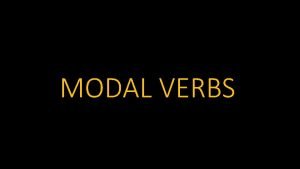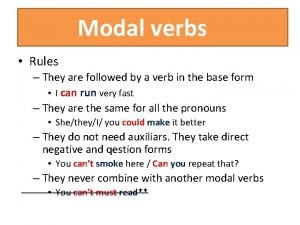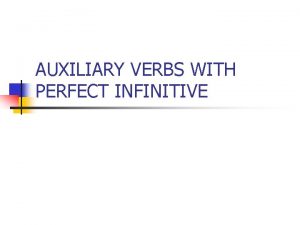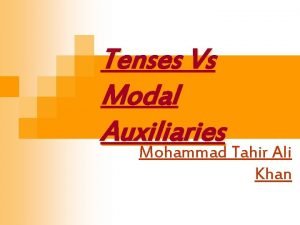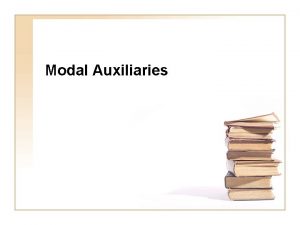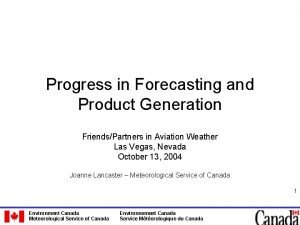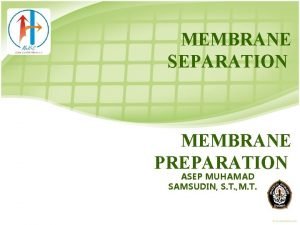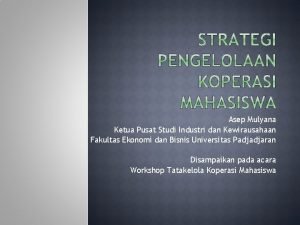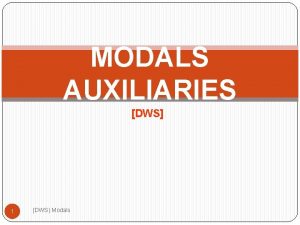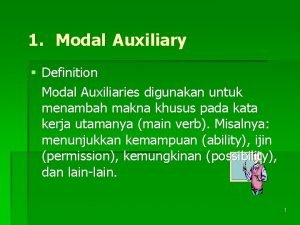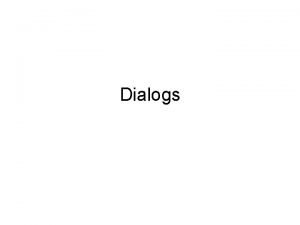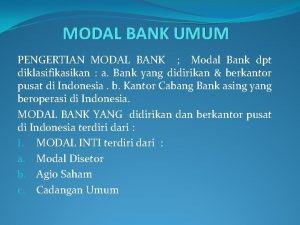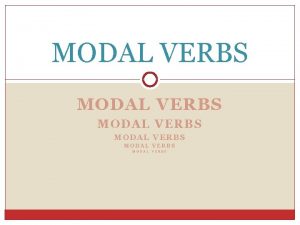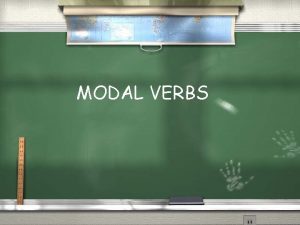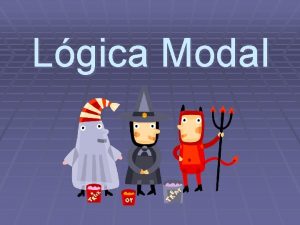Modal Auxiliaries Primary Auxiliaries Names of group Asep







![Tree diagram S VP NP N Vgp [ditrans] AUX NP NP V DET N Tree diagram S VP NP N Vgp [ditrans] AUX NP NP V DET N](https://slidetodoc.com/presentation_image_h/ec268561829b506f2ee0bd8e8248d2bf/image-8.jpg)


- Slides: 10

Modal Auxiliaries & Primary Auxiliaries Names of group Asep Sumantri Inggrid Amalia Siti Humaeroh

Modality allow us to express whether a state of affairs is likely, possible, necessary and so on (MOD). The modal auxiliaries are : Will and would signify volition or prediction Kate will hug the baby. Can, could , may, and might indicate possibility or probability Kate can hug the baby. Shall, should, must, and ought signify obligation Kate should hug the baby. And marginally : Need, dare and used to

Rules to remember : Auxiliaries – modals 1. Modal Auxiliaries + infinitive e. g. will hug

Tree diagram ( A modal auxiliaries does not carry ten S VP NP N Vgp [trans] AUX V NP N DET MOD Kate S will hug the baby. P d. O

Primary Auxiliaries (Perfect Aspect) ü Perfect aspect(PERF) is indicted by the presence of the auxiliary verb have. For example : Sally has finished this book Sue had given the dog a bone ü Unlike the modal auxiliaries, the primary auxiliaries do carry tense. In a verb group without modal, it is always the first element which is marked for tense, that is element immediately following tense


Primary Auxiliaries (Progressive Aspect) ü Perfect aspect (PERF) is indicated by the presence o the auxiliaries verb be. E. g. Sally is walking along the beach. Sue was giving the dog a bone. ü The primary auxiliaries do carry tense.
![Tree diagram S VP NP N Vgp ditrans AUX NP NP V DET N Tree diagram S VP NP N Vgp [ditrans] AUX NP NP V DET N](https://slidetodoc.com/presentation_image_h/ec268561829b506f2ee0bd8e8248d2bf/image-8.jpg)
Tree diagram S VP NP N Vgp [ditrans] AUX NP NP V DET N dog a bone TENSE PROG Sue (past) was giving the

Rules to remember : Auxiliaries – Progressive Aspect Progressive aspect : Be + -ing form ( present participle) e. g. was giving The progressive can also combine with modal and/or perfect auxiliaries Modal + progressive + v Sue may be giving the dog a bone. Present tense + perfect + progressive+ v Sue has been giving the dog a bone. Modal + Perfect + progressive + v Sue may have been giving the dog a bone.

Thank you
